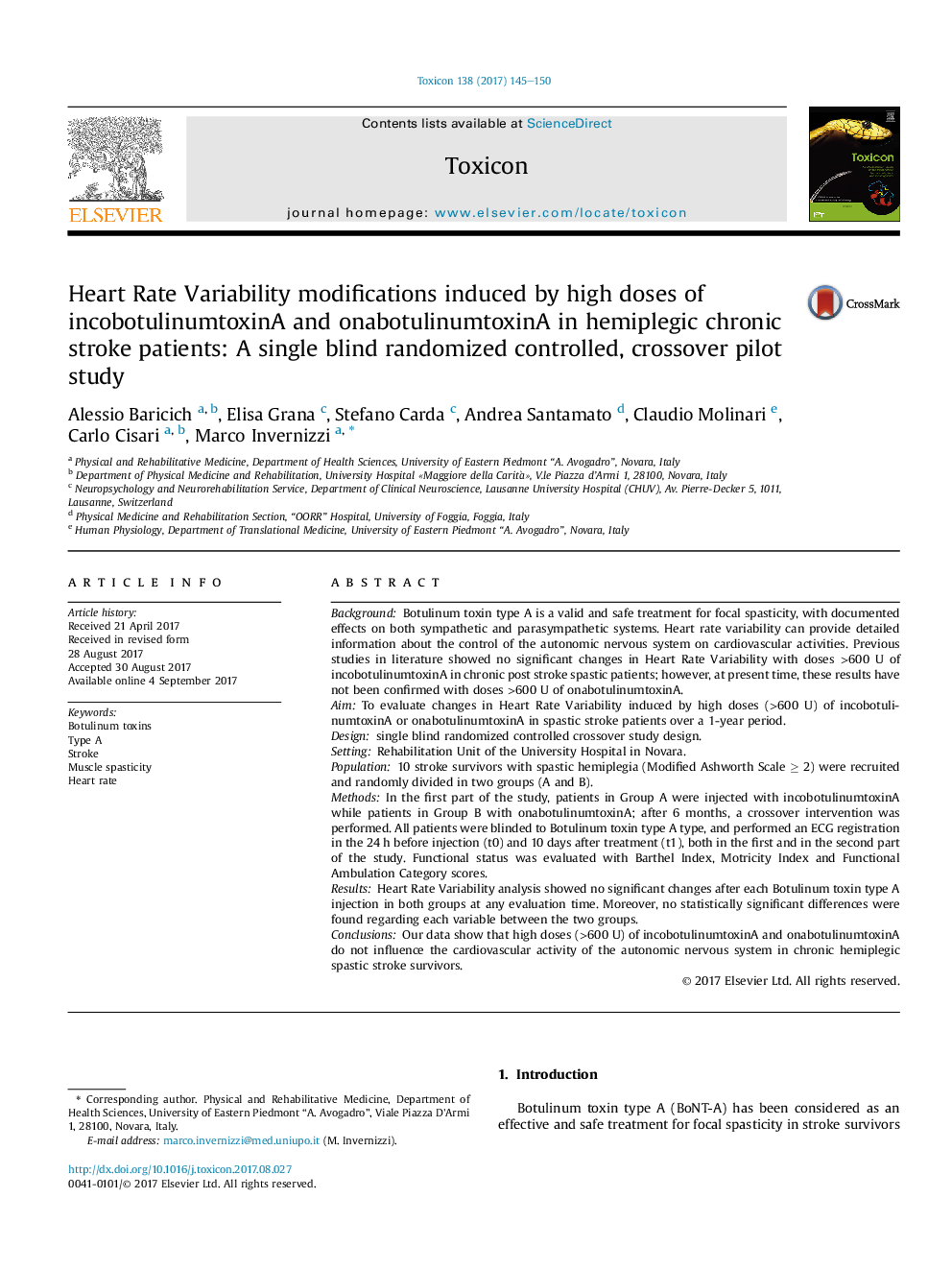| Article ID | Journal | Published Year | Pages | File Type |
|---|---|---|---|---|
| 5519215 | Toxicon | 2017 | 6 Pages |
â¢IncobotulinumtoxinA up to 12 units/kg was safe in terms of heart drive modifications in adult stroke hemiplegic patients.â¢OnabotulinumtoxinA up to 12 units/kg was safe in terms of heart drive modifications in adult stroke hemiplegic patients.â¢Multiple administrations of BoNT-A at high doses seemed not to induce cumulative effects in adult stroke hemiplegic patients.
BackgroundBotulinum toxin type A is a valid and safe treatment for focal spasticity, with documented effects on both sympathetic and parasympathetic systems. Heart rate variability can provide detailed information about the control of the autonomic nervous system on cardiovascular activities. Previous studies in literature showed no significant changes in Heart Rate Variability with doses >600 U of incobotulinumtoxinA in chronic post stroke spastic patients; however, at present time, these results have not been confirmed with doses >600 U of onabotulinumtoxinA.AimTo evaluate changes in Heart Rate Variability induced by high doses (>600 U) of incobotulinumtoxinA or onabotulinumtoxinA in spastic stroke patients over a 1-year period.Designsingle blind randomized controlled crossover study design.SettingRehabilitation Unit of the University Hospital in Novara.Population10 stroke survivors with spastic hemiplegia (Modified Ashworth Scale â¥Â 2) were recruited and randomly divided in two groups (A and B).MethodsIn the first part of the study, patients in Group A were injected with incobotulinumtoxinA while patients in Group B with onabotulinumtoxinA; after 6 months, a crossover intervention was performed. All patients were blinded to Botulinum toxin type A type, and performed an ECG registration in the 24 h before injection (t0) and 10 days after treatment (t1), both in the first and in the second part of the study. Functional status was evaluated with Barthel Index, Motricity Index and Functional Ambulation Category scores.ResultsHeart Rate Variability analysis showed no significant changes after each Botulinum toxin type A injection in both groups at any evaluation time. Moreover, no statistically significant differences were found regarding each variable between the two groups.ConclusionsOur data show that high doses (>600 U) of incobotulinumtoxinA and onabotulinumtoxinA do not influence the cardiovascular activity of the autonomic nervous system in chronic hemiplegic spastic stroke survivors.
